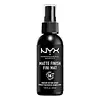What's inside
What's inside
 Key Ingredients
Key Ingredients

 Benefits
Benefits

 Concerns
Concerns

 Ingredients Side-by-side
Ingredients Side-by-side

Water
Skin ConditioningIsododecane
EmollientDimethicone
EmollientSilica
AbrasiveMethyl Methacrylate Crosspolymer
Dimethicone/Vinyl Dimethicone Crosspolymer
Skin ConditioningButylene Glycol
HumectantDecyl Glucoside
CleansingPhenoxyethanol
PreservativeTriethanolamine
BufferingCarbomer
Emulsion StabilisingChlorphenesin
AntimicrobialCaprylyl Glycol
EmollientAlumina
AbrasiveHexylene Glycol
EmulsifyingEthylhexylglycerin
Skin ConditioningHydroxyethylcellulose
Emulsion Stabilising3-O-Ethyl Ascorbic Acid
Skin ConditioningWater, Isododecane, Dimethicone, Silica, Methyl Methacrylate Crosspolymer, Dimethicone/Vinyl Dimethicone Crosspolymer, Butylene Glycol, Decyl Glucoside, Phenoxyethanol, Triethanolamine, Carbomer, Chlorphenesin, Caprylyl Glycol, Alumina, Hexylene Glycol, Ethylhexylglycerin, Hydroxyethylcellulose, 3-O-Ethyl Ascorbic Acid
 Reviews
Reviews

Ingredients Explained
These ingredients are found in both products.
Ingredients higher up in an ingredient list are typically present in a larger amount.
Phenoxyethanol is a preservative that has germicide, antimicrobial, and aromatic properties. Studies show that phenoxyethanol can prevent microbial growth. By itself, it has a scent that is similar to that of a rose.
It's often used in formulations along with Caprylyl Glycol to preserve the shelf life of products.
Water. It's the most common cosmetic ingredient of all. You'll usually see it at the top of ingredient lists, meaning that it makes up the largest part of the product.
So why is it so popular? Water most often acts as a solvent - this means that it helps dissolve other ingredients into the formulation.
You'll also recognize water as that liquid we all need to stay alive. If you see this, drink a glass of water. Stay hydrated!
Learn more about Water